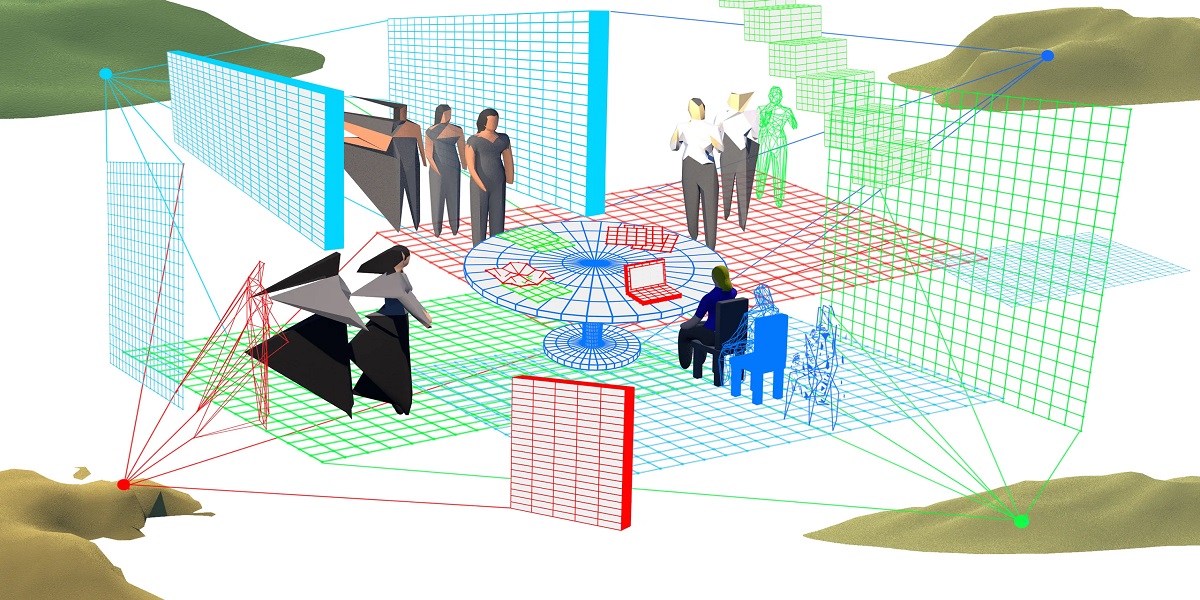
How Rise Of Remote Work Is Increasing Adoption Of Virtual Desktop Infrastructure?
- By Sharad Acharya
- 19-10-2021
- Technology
When the novel coronavirus first started, everyone felt its most dramatic impact on how we work. The traditional workspaces were shut down, and many employees began working from home. Since then, there has been a rise in remote working. Behind this rising trend, the challenges for the IT team are also increasing. While employees are able to work online, the IT team is dynamically managing applications and data to improve security and access in the future.
How to reduce this struggle of remote working?
With an increase in remote working, the popularity of Virtual Desktop Infrastructure (VDI) is also increasing. While traditional models restrict our capability to collaborate, access data quickly, and use different devices for work, virtual desktop hosting makes it easier for employees, the IT team, and employers.
This post will discover how the rise of remote working has led to increased hosted virtual desktops.
Challenges Of Remote Work In Traditional Office
Long before the coronavirus outbreak actually started, employees were routing for work from home. If you look at this survey, more than 36 million people were already working from home between 2017 and 2018. In fact, employers were using remote working or working flexibility to attract great talents.
Now, the numbers released only last year from Pew Research say:
Over 87% of employees find it easy to access tools and technologies at home, 64% feel more motivated to work, and 80% can meet deadlines without delays.
In fact, 67% of businesses are even working to offer employees partial or complete remote working opportunities after COVID-19.
Undoubtedly, the wave of VDI is already here, and it is here to stay. Even when people returned to work after the pandemic, many employees would still ask to work from home. This is because:
Traditional offices restrict employees to one place.
Employees need to do a 9-5 job, which includes travel, commute, and relocation.
It is easier for employees to engross in other chores in breaks.
Using Virtual Desktop Hosting For Productivity And Collaboration
When you allow your employees to work remotely, you also need to offer remote working architecture. While many businesses have managed work with VPN-based laptops, hosted VDI solutions are much easier. You can maintain security without restricting employees to one device, allow a true sense of remote working, and empower employees with seamless data access.
Simple Execution
Virtual desktop hosting helps you create a centralized interface. This means that you can consolidate your network, storage, and computing power in one place. Your Cloud Service Provider (CSP) can help you manage and maintain this interface without any hassle. There are fewer components, so you have fewer things to worry about. Simply educate your employees on hosted virtual desktop usage and improve business efficiency.
Scalable Use
The cloud is all about scalability. It is one of the most popular benefits of the cloud. You can scale your resources and storage according to your requirements and decrease when you no longer need them.
For example, you are an accounting firm and need more computing power for QuickBooks data processing during the tax season. After the tax season, you won’t need this much computing power. With virtual desktop hosting, you can easily increase your storage and resources temporarily till the seasonal demand.
This helps you reduce the waste of resources and improve your budget optimization.
Budget Management
Compared to in-house VDI, virtual desktop hosting is cost-effective. You are only using the computing power and storage from a resource that the cloud provider centrally manages. You are not setting up your own virtual desktop infrastructure, which is expensive.
Additionally, you don’t need to manage and pay for actual office space; everything can work virtually.
This mitigates your cost of accessing desktops remotely. So, when you are offering remote access to your employees, you are not thinking about how much it costs you.
Improved Speed
Legacy systems and office desktops are slow. Over time, these desktops and units lose efficiency because new technologies are launched, and you keep requiring more and more computing power. As a result, the speed of accessing applications and data reduces with time, which hampers your business productivity.
Virtual desktop hosting mitigates this issue. The cloud provider handles the processing power and real-time data management. It has such excellent processing power that you can see changes reflect in all files or data reserves almost immediately. In fact, when you open a large file, it opens much more quickly than office desktops.
Flexible Endpoint Use
Without virtual desktop hosting, your IT team either restricts employees to office desktops or a dedicated office-issued or another device that is set up by the team. This means that wherever your employees go, they need to carry this device. When this device fails, their working downtime starts until it is fixed.
Hosted virtualized desktops mitigate this issue. Your employees can access cloud desktops on any device of choice, whether a laptop, desktop, phone, or tablet.
Further, these endpoints are not really hosting the thin clients (cloud desktops). Therefore, your thin clients don’t store data or applications on the endpoint. Once the employee closes the virtual desktop, they can access their personal device usually without any office data. This, specifically, saves businesses from cyberattacks. If the endpoint is attacked, your IT team can even refresh desktops remotely to remove the infection.
Better Hardware Use
Hosted virtual desktops help you use hardware for longer. Your office PCs lose their efficiency quickly considering the growth in technology. After a few years, these laptops and PCs either become slow or wear off or stop responding to the high-config needs of business-critical apps.
VDI on the cloud mitigates this issue. With cloud VDI, you do not use the resources of these desktops. Hence, you can keep using office PCs and laptops for longer.
Conclusion
The rise of remote working has also increased the popularity of virtual desktop hosting. There’s the ease in remote accessibility with VDI. You can access business-critical applications and sensitive data securely and manage access to different departments. In fact, virtual desktop hosting on the cloud is one of the best ways to integrate various business siloes, meet department requirements, and still maintain data privacy. Find the right virtual desktop infrastructure hosting provider and enjoy a VDI-powered remote workplace.
Recent blog

Tips for E-commerce Business Owners to improve Customer Relationships
E-commerce | 30-04-2024
Instagram Reels: A Game-Changer For E-commerce Marketing
Digital Marketing | 29-04-2024




